JSC2014-E-009481 (21 Jan. 2014) --- This is a close-up view of the Expedition 40 and Soyuz 38 cakes honoring the training staff and Expedition 39/40 crew during a cake-cutting ceremony in the Jake Garn Simulation and Training Facility at NASA's Johnson Space Center. The crew members are NASA astronaut Steve Swanson, Expedition 39 flight engineer and Expedition 40 commander; Russian cosmonauts Alexander Skvortsov and Oleg Artemyev, both Expedition 39/40 flight engineers. Photo credit: NASA
Quelle: NASA
.
Update: 20.03.2014
.
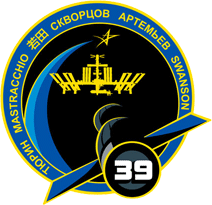
.
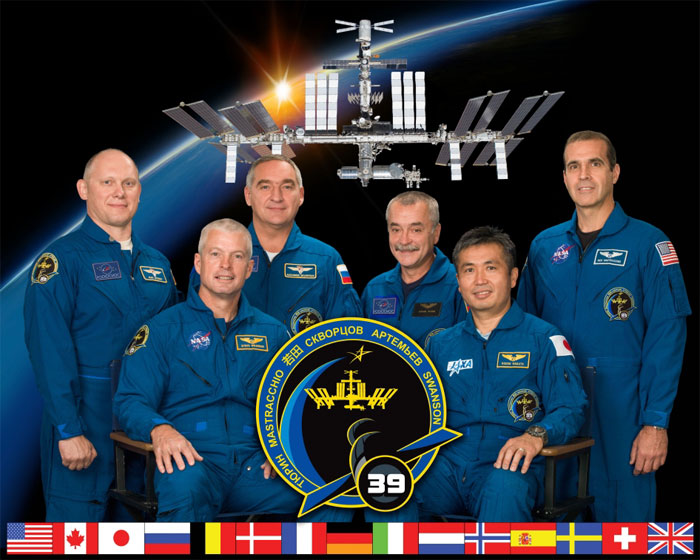
Image above: Expedition 39 crew members take a break from training at NASA's Johnson Space Center to pose for a crew portrait. Pictured on the front row are Japan Aerospace Exploration Agency (JAXA) astronaut Koichi Wakata (right), commander; and NASA astronaut Steve Swanson, flight engineer. Pictured from the left (back row) are Russian cosmonauts Oleg Artemyev, Alexander Skvortsov, Mikhail Tyurin and NASA astronaut Rick Mastracchio, all flight engineers. Photo credit: NASA
.
NASA astronaut Steve Swanson takes a turn on a tilt table as part of his conditioning in preparation for launch to the International Space Station with his Expedition 30/40 crewmates.
.
On the Russian side of the complex, Flight Engineer Mikhail Tyurin cleaned ventilation screens and conducted routine maintenance on the life-support system in the Zvezda service module.
Tyurin also performed the Seiner ocean-observation study, documenting color blooms in the oceans’ waters for the fishing industry.
Meanwhile at the Baikonur Cosmodrome in Kazakhstan, the three flight engineers who will return the station to its full six-person crew complement are in the homestretch of preparations for Monday’s launch aboard the Soyuz TMA-12M spacecraft. NASA astronaut Steve Swanson and Russian cosmonauts Alexander Skvortsov and Oleg Artemyev rehearsed rendezvous procedures on a laptop simulator Wednesday and continued physical conditioning for their flight. The trio is scheduled to launch from Baikonur at 5:17 p.m. EDT Monday (3:17 a.m. Tuesday, Kazakh time) and dock to the Poisk mini-research module at 11:04 p.m. NASA Television will provide live coverage of all the events, including the hatch opening at 12:45 a.m. Tuesday.
Quelle: NASA
.
Update: 21.03.2014
.
New Station Crew Wrapping Up Training for Launch
.
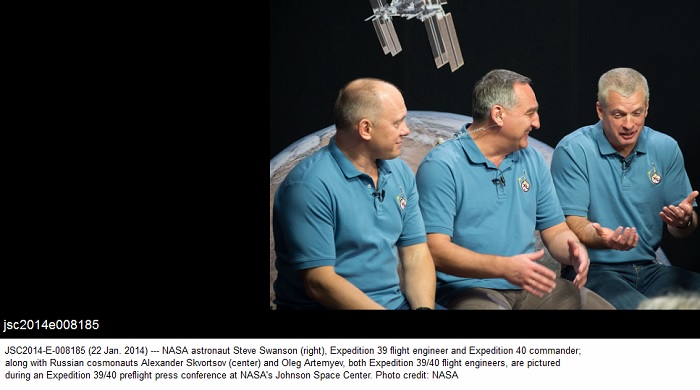
Three new Expedition 39 crew members wrapped up training Friday at the Baikonur Cosmodrome in Kazakhstan as they prepare for next week’s launch to join Commander Koichi Wakata and Flight Engineers Rick Mastracchio and Mikhail Tyurin aboard the International Space Station.
NASA astronaut Steve Swanson and Russian cosmonauts Alexander Skvortsov and Oleg Artemyev inspected the Soyuz TMA-12M that will carry them on an express, six-hour journey to the station on Tuesday. The trio checked out the seats and the interior configuration of the Soyuz in advance of its being mated with its third stage booster and rolled out to the launch pad.
The Soyuz carrying Swanson, Skvortsov and Artemyev is scheduled to lift off from Baikonur at 5:17 p.m. EDT Tuesday (3:17 a.m. Wednesday, Kazakh time) and dock to the Poisk mini-research module at 11:04 p.m. NASA Television will provide live coverage of all the events, including the hatch opening planned for 12:45 a.m. Wednesday.
Quelle: NASA
.
Update: 24.03.2014
.
Rocket Soyuz with piloted spaceship put on Baikonur launching pad
.
Russian rocket Soyuz with a piloted spaceship was put on a launching pad at spaceport Baikonur on Sunday morning.
“Delivery and putting of rocket Soyuz-FG with docked piloted spaceship Soyuz TMA-07M passed as scheduled,” an official of Russian space agency Roscosmos said at the southern Russian spaceport. “The gates of an operations and checkout facility opened at 7am local time (1am GMT) on Sunday according to years-long tradition,” the space official said.
A train convoyed by police has brought slowly rocket Soyuz-FG with docked spaceship Soyuz TMA-12M to the launching pad. Logotypes of Roscosmos, Russian aerospace corporation Energia and the national flags of Russia and the United States are placed on the rocket.
After the placement of the rocket on the launching pad launch teams started works according to the plan of the first day of pre-launch operations.
On Wednesday, March 26, the crew of next long-term ISS-39/40 expedition is to fly to the International Space Station (ISS) for an orbital mission onboard this spaceship. The rocket is to be launched at 1.17am Moscow time on Wednesday (9.17pm GMT on Tuesday). For the days before the launch specialists will conduct final checks of the rocket with manned spaceship Soyuz TMA-12M docked to it and will fuel the booster.
Roscosmos cosmonauts Alexander Skvortsov, Oleg Artemyev and NASA astronaut Steven Swanson will be first to fly to the ISS this year. However, their substitute crewmembers Alexander Samokutyaev, Yelena Serova and NASA astronaut Barry Wilmore will be on standby until the very launch.
Quelle: ITAR TASS
.
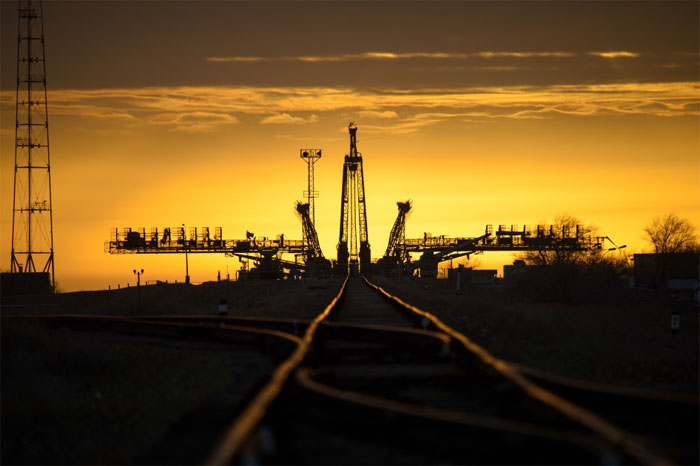
Expedition 39 Soyuz Rollout
.
The sun rises behind the Soyuz launch pad shortly before the Soyuz TMA-12M spacecraft is rolled out by train to the launch pad at the Baikonur Cosmodrome, Kazakhstan, Sunday, March, 23, 2014. Launch of the Soyuz rocket is scheduled for March 26 (5:17 p.m. U.S. EDT on March 25) and will send Expedition 39 Soyuz Commander Alexander Skvortsov of the Russian Federal Space Agency, Roscosmos, Flight Engineer Steven Swanson of NASA, and Flight Engineer Oleg Artemyev of Roscosmos on a six-month mission aboard the International Space Station.
.
Quelle: NASA
.
Update: 25.03.2014
.
Soyuz TMA-12M Crew Ready for Six-Hour Fast Ride to Space Station
.
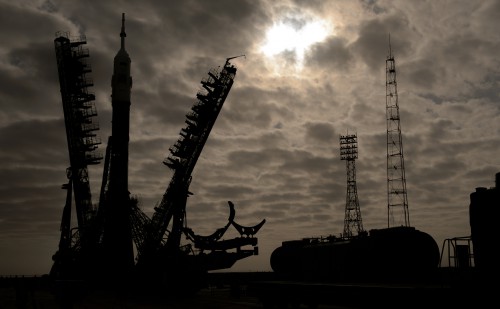
.
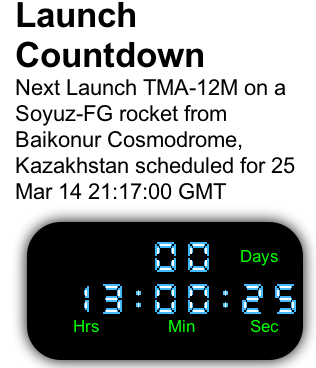 .
.Three new crew members—including a hot chili sauce lover from Moscow, a computer scientist from Colorado, and a Latvian engineer who studied in today’s Estonia and once served with the Soviet Army in Lithuania—will rocket toward the International Space Station (ISS) tomorrow, completing the second half of the six-man Expedition 39 and laying the groundwork for Expedition 40, which will run the outpost throughout the summer. Soyuz TMA-12M is scheduled to launch from Baikonur Cosmodrome in Kazakhstan at 3:17 a.m. local time Wednesday, 26 March (5:17 p.m. EDT Tuesday, 25 March), carrying Russian cosmonauts Aleksandr Skvortsov and Oleg Artemyev and NASA astronaut Steve Swanson. With three previous space missions between them, a cumulative 203 days in orbit and experience of four past spacewalks, they have the right skills for a busy six months aboard the ISS.
The prime crew and their backups—Russian cosmonauts Aleksandr Samokutyayev and Yelena Serova and NASA astronaut Barry Wilmore—completed their final exams inside the Soyuz simulator earlier this month. Both crews reportedly achieved “Excellent” scores. The two crews left the cosmonauts’ training center in Star City, on the forested outskirts of Moscow, and arrived at Baikonur on 13 March to begin preparations for launch, which included familiarization sessions in the simulator, checks of documentation, and fitting of their custom-made Sokol launch and entry suits and molded Soyuz seat liners.
Last week, the final checkout of the Soyuz TMA-12M spacecraft was conducted, and on Saturday, 22 March, it was mated with the rocket. On Sunday, following unanimous authorization from technical management, the vehicle was transferred horizontally out to the pad and raised to the vertical. On Tuesday, clad in their Sokol suits, Skvortsov, Artemyev, and Swanson will arrive at the pad and be helped into their seats aboard Soyuz TMA-12M. Following final checks, Commander Skvortsov’s controls will be activated and the three men will be instructed to close their visors. Internal avionics will be initiated and the on-board flight recorders spooled up to monitor the myriad systems.
Inside the control bunker, the “launch key” will be inserted at T-5 minutes, effectively enabling the ordnance to support Soyuz TMA-12M’s ascent to orbit, and the final phase of the countdown will include the completion of nitrogen purging, the pressurization of propellant tanks, and the topping-off of cryogenics. At T-10 seconds, the turbopumps on the rocket’s central core and its four tapering strap-on boosters will awaken and the engines will steadily build up thrust to full power, producing a retraction of the fueling tower and a liftoff at 3:17 a.m. local time Wednesday (5:17 p.m. EDT Tuesday).
Rising rapidly, the vehicle will pass 1,100 mph (1,770 km/h) within a minute of liftoff, and at T+118 seconds, at an altitude of 28 miles (45 km), the four strap-on boosters will exhaust their propellant and be jettisoned. This will leave the central core and its single RD-108 engine to continue the push toward orbit. By two minutes into the flight, the vehicle will be traveling at more than 3,350 mph (5,390 km/h). The payload shroud and escape tower will be jettisoned shortly afterward, and, some 4 minutes and 58 seconds after leaving Baikonur, the core stage will separate at an altitude of 105 miles (170 km) and the third and final stage will roar to life to boost Skvortsov, Artemyev, and Swanson to a velocity in excess of 13,420 mph (21,600 km/h). By the time the third stage departs the vehicle, nine minutes into the flight, the crew will be in space.
As with the last four crewed ISS missions, Soyuz TMA-12M will follow a “fast rendezvous” profile to reach the space station a mere six hours, and four orbits, after liftoff. Two computer-guided thruster “burns” are scheduled to occur within the first 90-minute orbit of Earth, with several others to follow over the next couple of hours. According to NASA, the spacecraft will dock with the station’s space-facing (or “zenith”) Poisk mini-research module at 11:04 p.m. EDT Tuesday, about five hours and 47 minutes after departing Baikonur. In the aftermath of capture, a complex series of pressure and other checks will be conducted to verify the integrity of the seal between the two space vehicles. Hatch opening is anticipated at 12:45 a.m. EDT Wednesday, almost two hours after docking, and Skvortsov, Artemyev, and Swanson will undoubtedly be engulfed in hugs from the incumbent Expedition 39 crew of Japanese Commander Koichi Wakata, Russian cosmonaut Mikhail Tyurin, and NASA astronaut Rick Mastracchio.
Quelle: AmericaSpace
.
Update: 20.00 MEZ
.
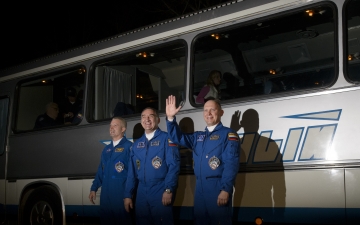
A new Expedition 39 trio waits at the Baikonur Cosmodrome in Kazakhstan for its launch Tuesday night to the International Space Station. The SpaceX Falcon rocket carrying the Dragon commercial cargo craft awaits its launch planned for Sunday evening from Cape Canaveral, Fla.
New Flight Engineers Alexander Skvortsov, Steve Swanson and Oleg Artemyev will launch aboard a Soyuz TMA-12M spacecraft at 5:17 p.m. EDT for a six-hour ride to the orbital laboratory. Their rocket rolled out to the launch pad Sunday morning and has been raised into its vertical launch position.
Quelle: NASA
...Weiter geht es ab 21.45 MEZ
...
...
Update: 21.45 MEZ - LIVE-Frams von Start / Quelle: NASA-TV
.
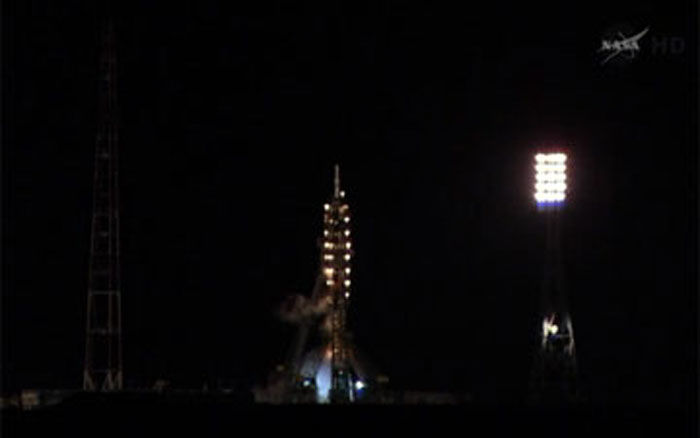
.....
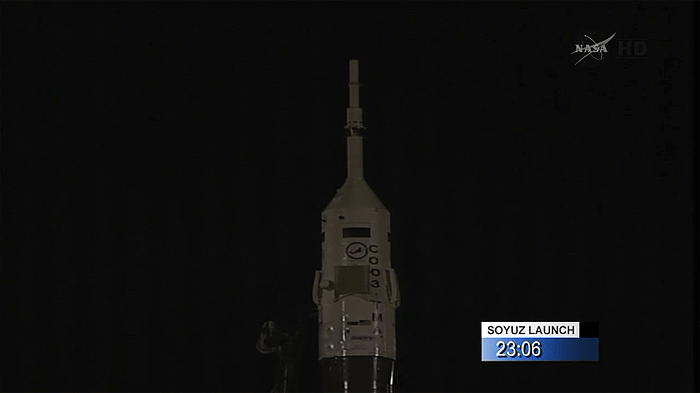
.
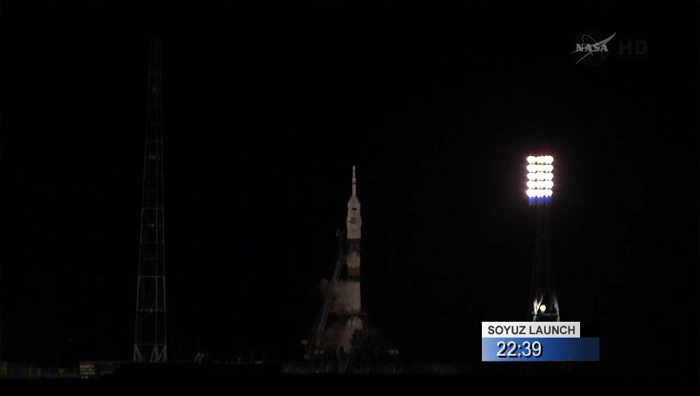
.....
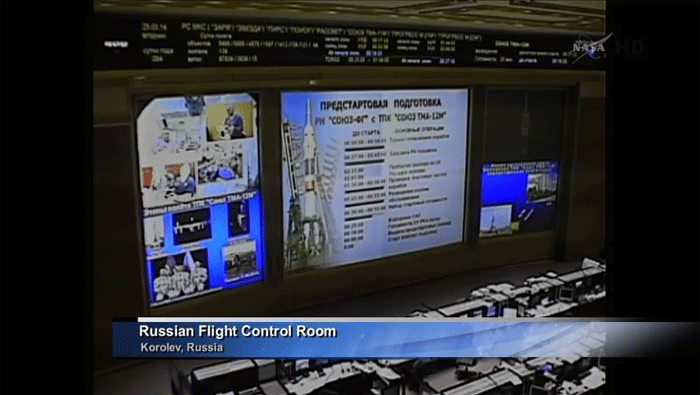
.
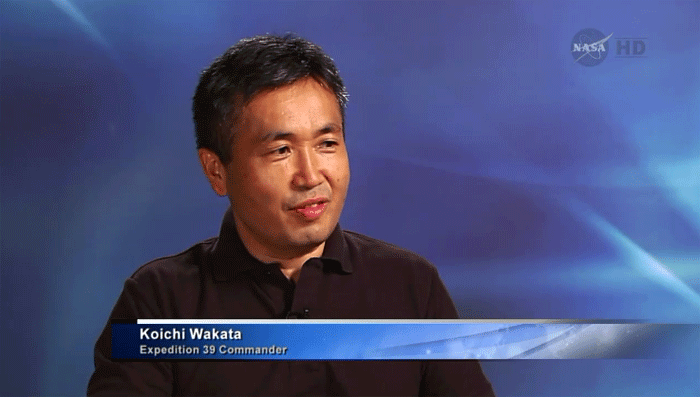
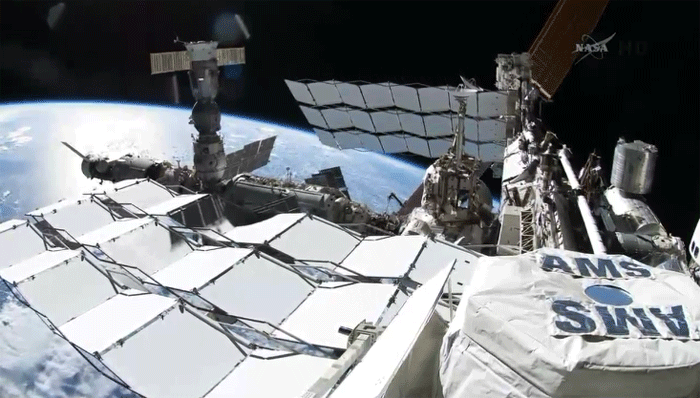
...
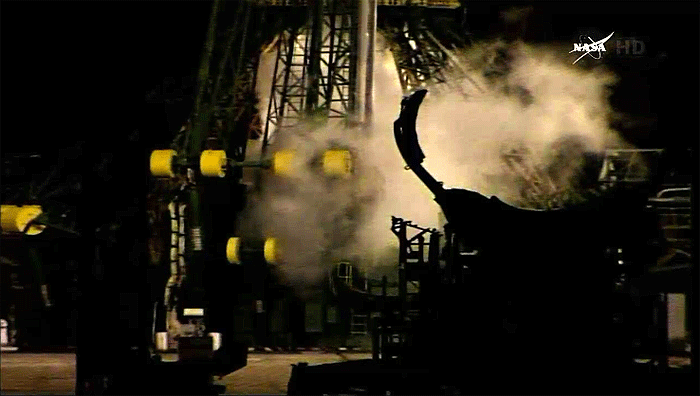
...
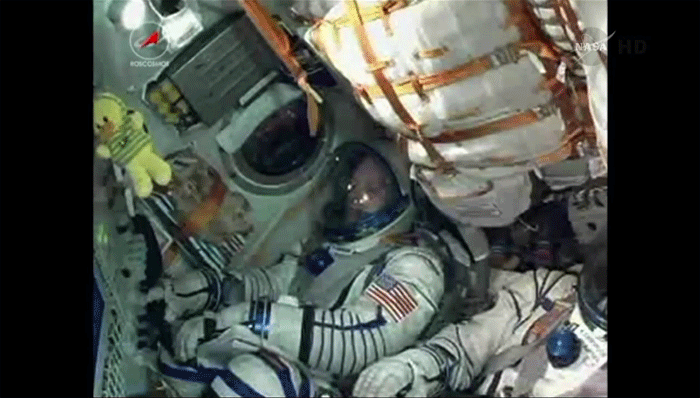
...
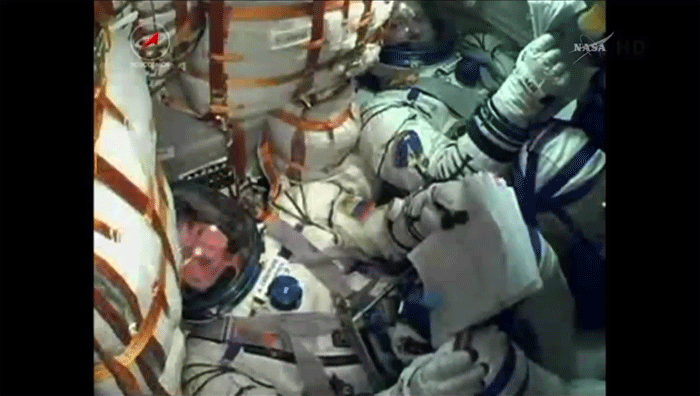

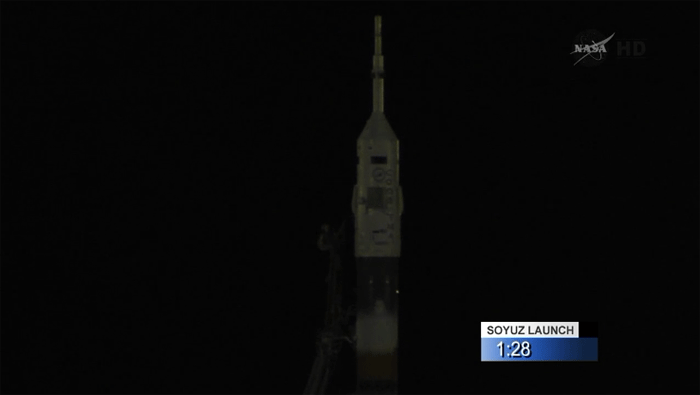
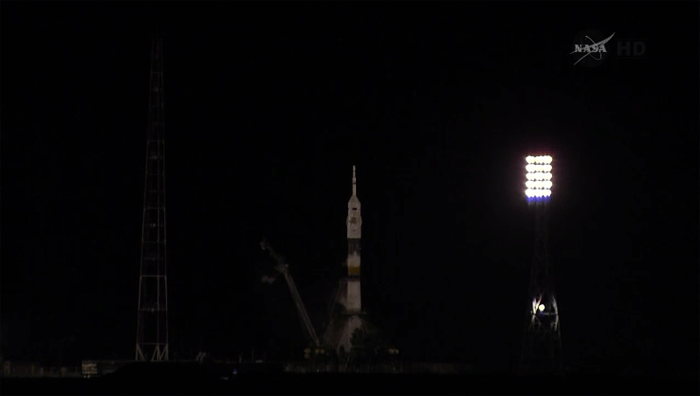
.
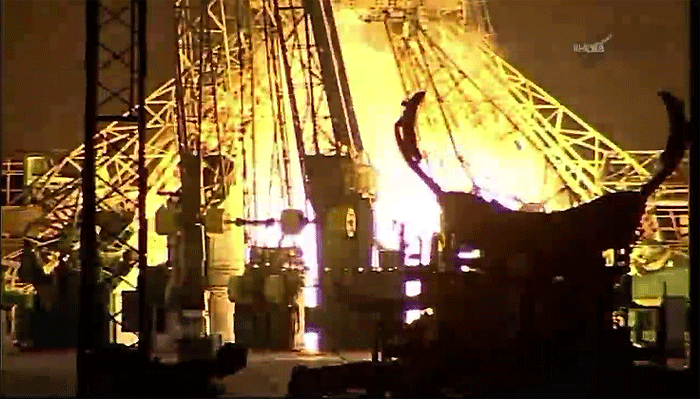
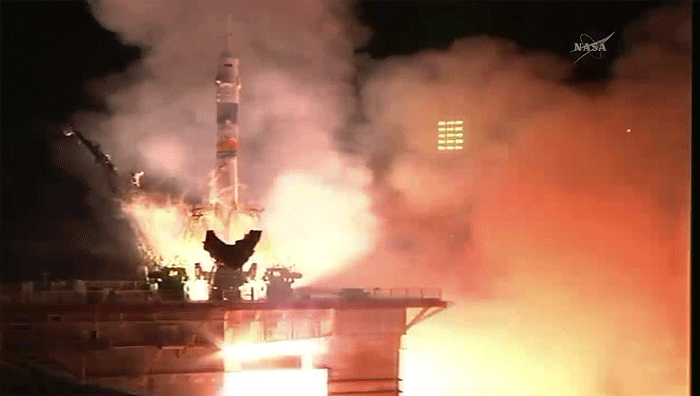

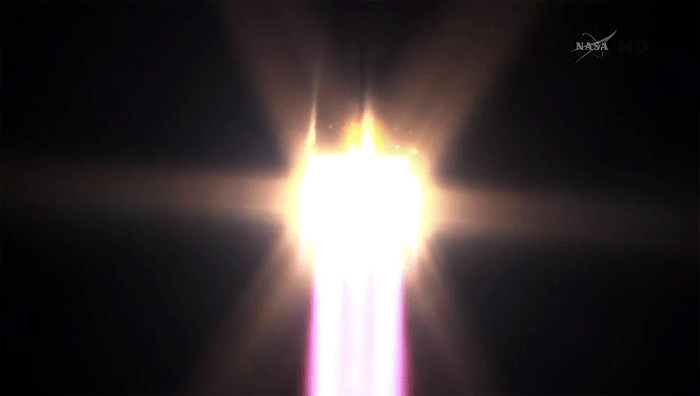

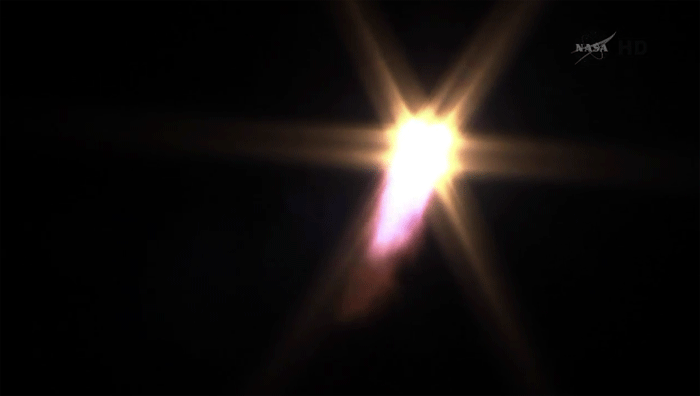
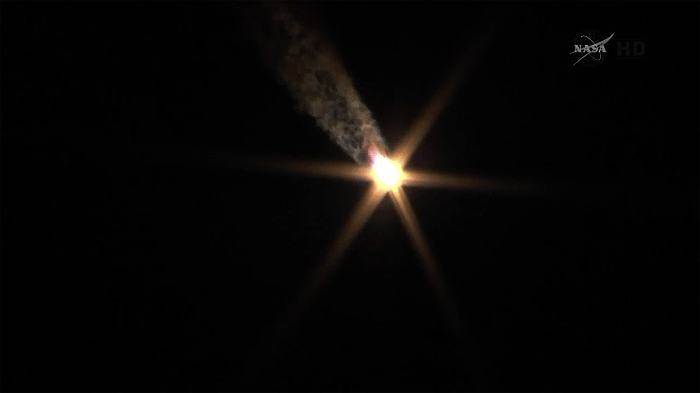
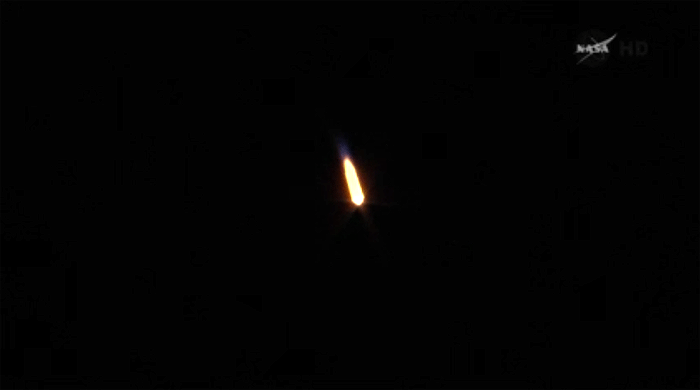
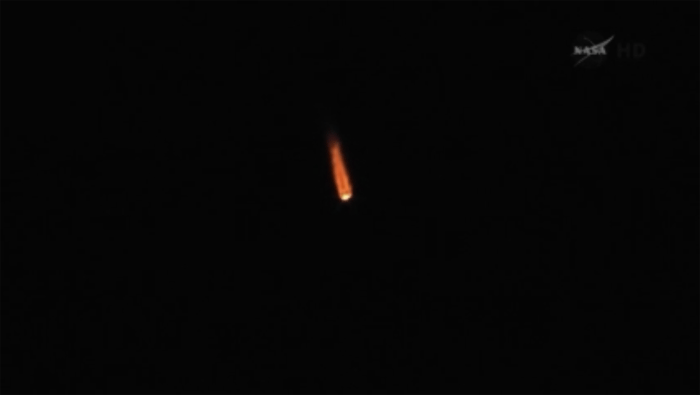
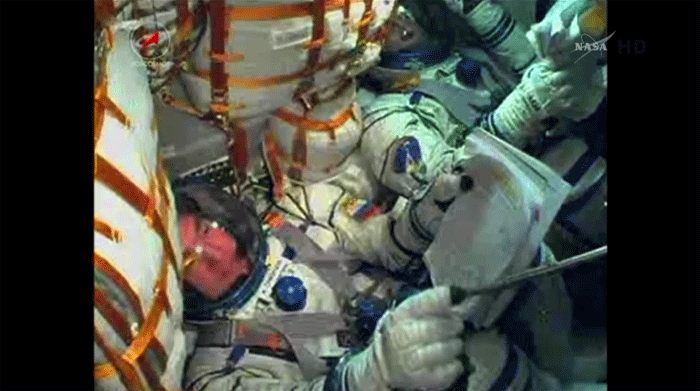
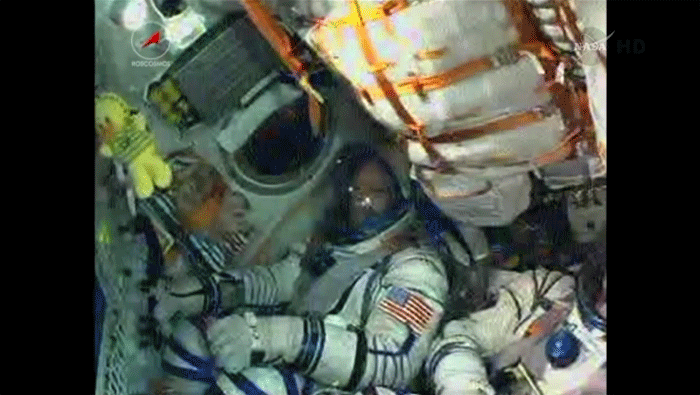
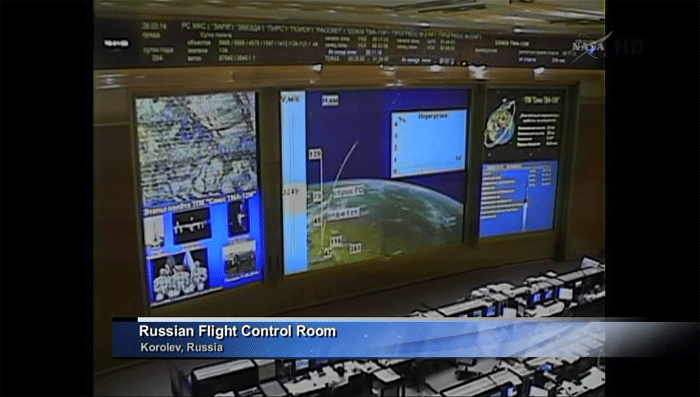
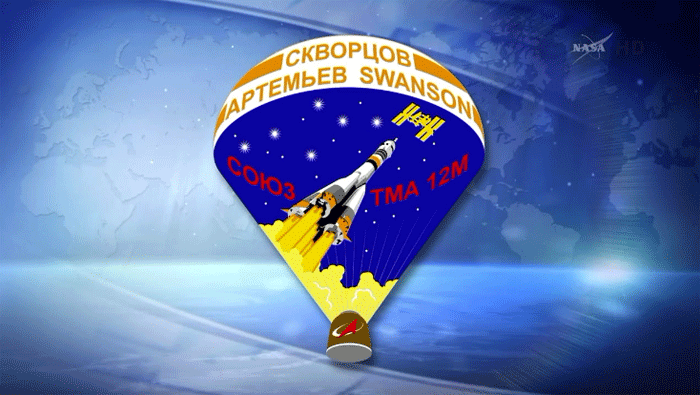
Quelle: NASA
.
Update: 26.03.2014
.
NASA Astronaut Snaps Soyuz Launch from Orbit
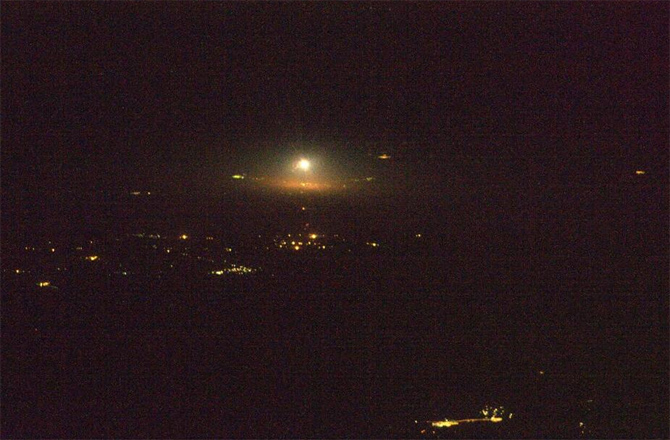
At 5:17 p.m. EDT Tuesday (3:17 a.m. local time, Wednesday), a Soyuz rocket launched from Baikonur Cosmodrome in Kazakhstan, sending two Russian cosmonauts and a NASA astronaut on a fast-track ride to the International Space Station.
Quelle: D-News
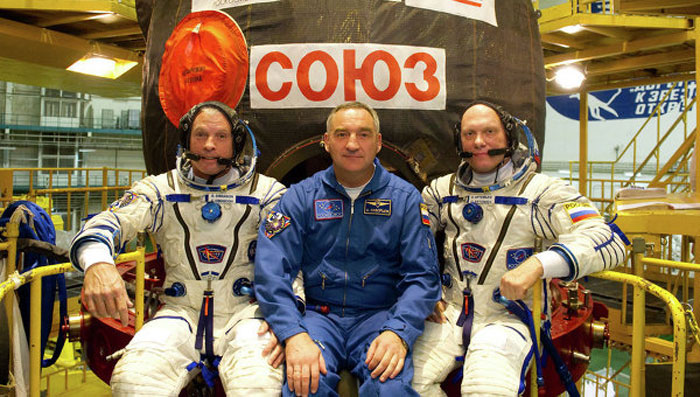
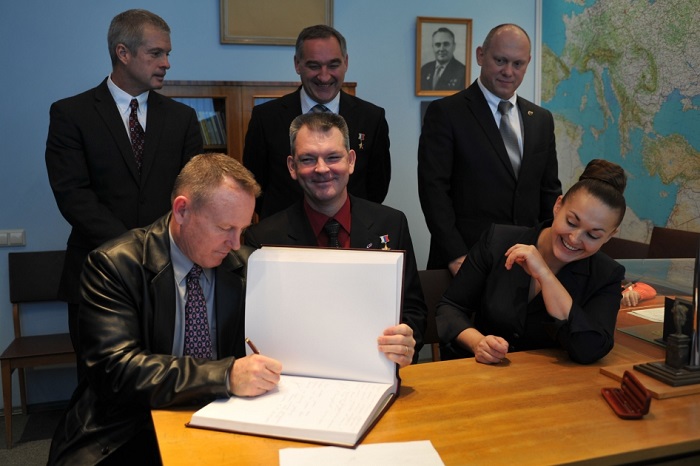
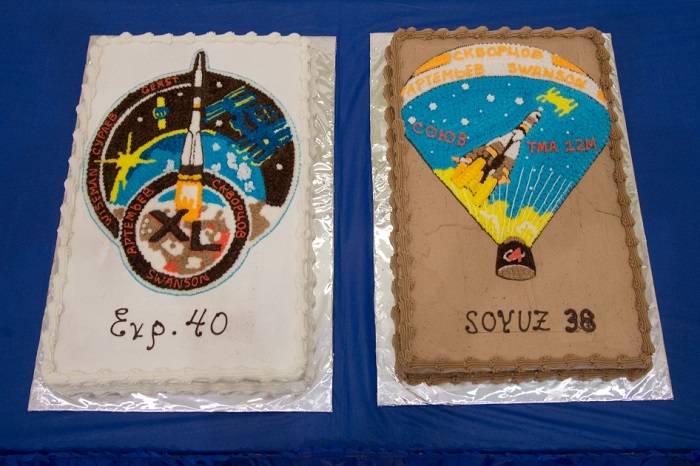


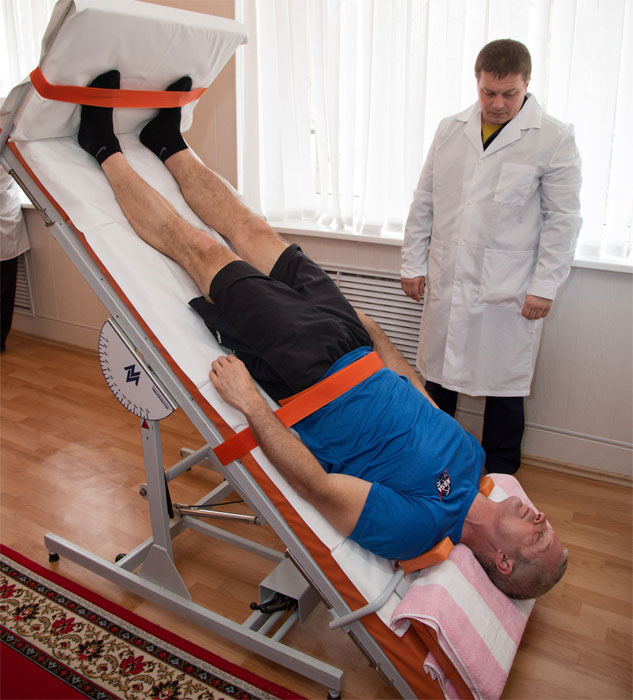



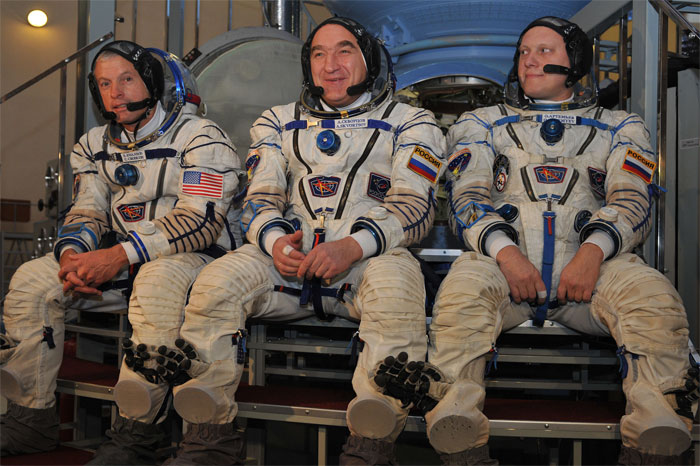
 .
.


























